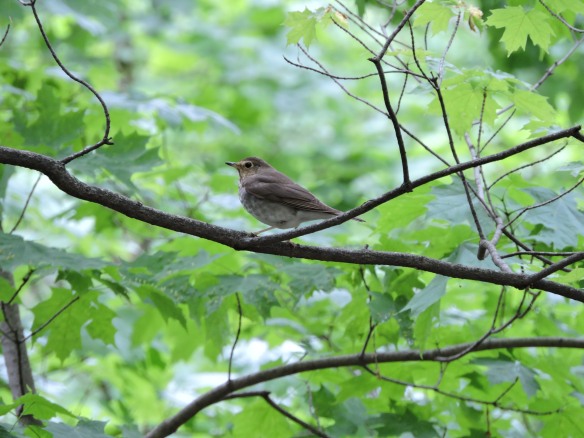Step 1: Ride a bike.
Step 2: Observe birds.
I had planned in my head this grand series of blog posts about how to most effectively bird by bike. But after thinking about it, I realized that nobody needs that. All you need to do is do it at least once, and if you like it, great! Then keep doing it.
I think we all fall into the trap of hyper-competitiveness that is made worse by the internet. I could tell you about how I have honed my strategy in bike-birding and what I think is the best way to do it. But you are not me, so it doesn’t matter. If your bike has two wheels (or more! or less!) then that is all that matters. Well, that and observing birds. You don’t need fancy gear. Inflate your tires and put on a backpack to carry your binoculars and some granola bars. Here is the equipment you need to bike-bird:
1.) A helmet.
2.) Binoculars, probably, but only if you want.
Again, I was going to list the accoutrements I have purchased in my two-and-a-half years of full-blown bike birding, but that would just seem like another barrier to entry for someone thinking about giving it a try for the first time. The biggest hurdle to get over when choosing to bird by bike is not equipment or physical fitness, but FOMO: Fear Of Missing Out.

Swainson’s Thrush
Find a local patch as soon as you can, and bird the hell out of it. You won’t have the time or the energy to bike across town to the known hotspots that throw off eBird rarities. The Swainson’s Thrushes won’t care. I found this one and many other common migrants at a random woodlot close to my new house back in May. Eventually you will not even think about that potential Alder Flycatcher that may or may not be out at the marsh 15 miles away; instead you will be thinking about what you can find next at your local patch. It took me a long time for this to sink in, but once it did I enjoyed birding a lot more. The birds at Foster Park (and now the California Road Woodlot) were my patch birds, and therefore MY birds. I found them. It felt good. And I didn’t have to buy gas.

Yellow-breasted Chat
Eventually, you will want to leave the local patch. But since you have gotten good at bike birding, it won’t be as big of a deal if you need to ride an hour to get to a specific place. And that’s where you will get some really good birds to add to your list, like the Yellow-breasted Chat that I saw today at the Dustin preserve when I visited again to reconnect my green list to the flat tire I suffered three weeks ago.

Yellow-throated Vireo
So yes, flat tires and things will happen. You will encounter unpaved roads, gravel, and roadside trash that will force you to invest in a decent hybrid bike, tools, and a repair kit. You will eventually want that stuff anyway, because you will want to go farther and farther in fulfillment of finding new birds for the green list. But that happens way later. It happens after you have seen a bunch of Yellow-throated Vireos. It happens after you have bike birded for the first time.

Turtle
You will be able to stop on a moment’s notice to look at cool stuff crossing the road, like small turtles with leeches stuck to their backs. Or slam on the breaks because you heard a sparrow way out in the grass by the road, and because you are on a bike, you can actually hear it and count it. Eventually, you will get to the point where you don’t like driving to birds any more.
Try bike birding once! You will like it. It is good for you. It is good for birds. Yay!
